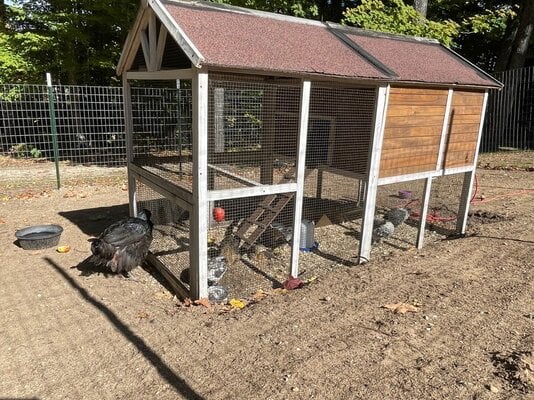HilaryAkin
Songster
So, I have 8 five and a half week old chicks. I had them in the brooder until they were about four weeks old and then brought them outside to our baby coop and enclosure (the one I keep them in while introducing them to the rest of the flock). When they were two weeks I started bringing them out for periods of time when it was 60s and a brief 70s day. It is mostly 40 degrees during the day and 30 degrees at night now here in Northern Michigan. I do have a heater, Brinsea? The one that is yellow and they can get under it, in the top part of the coop. They seem to run around the enclosed area decently during the day and just run inside if it rains or it's extra breezy. It was feels like temps of 32 degrees last night and it won't be getting any warmer. I think snow is coming on Monday (a few days). My question is, can the chicks keep staying outside at night since I have slowly acclimated them to the cooler weather and did okay in low 30s last night, or should I bring them inside to the heated garage and their brooder at night until they are more feathered out? 6-8 weeks? Also, the baby coop is a prefab one from TSC that is just for the in between period. Will it suffice in the next couple weeks of potential snow? They are definitely too small to go into the big coop with their sisters.
P.S. please excuse our other hen, Dinner (my 10 year old named her that ugh, his chicken), that's in the pic, she's molting.
Thanks!
P.S. please excuse our other hen, Dinner (my 10 year old named her that ugh, his chicken), that's in the pic, she's molting.
Thanks!




